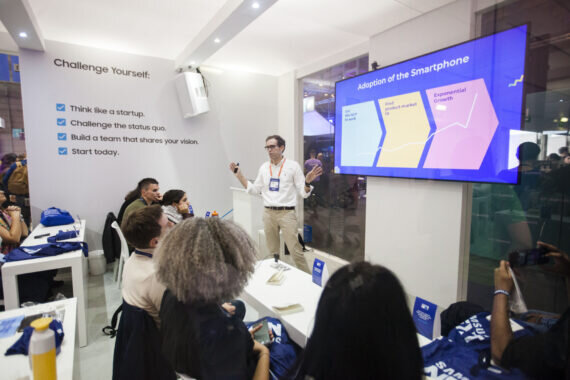Product innovation in a hyper-growth era
This video is a part of our ClassroomX educational series on the nuts and bolts of building a startup today. From defining your business model to growth, product strategy, and building your community, these 15 lessons by domain experts aim to equip young founders with crucial insights to transform their early-stage products into viable businesses.
How to achieve product innovation in a hyper-growth era
Every innovator wants his or her product to achieve success and in the process, change the very fabric of society. But it takes a particular combination of factors — excellent design, great product-market fit, and impeccable timing — to achieve that holy grail for product innovators.
What you'll learn from this lesson:
About Paulo Dimas
Paulo, vice president of product innovation at Unbabel, is an award-winning researcher, entrepreneur, and innovator in the AI and geolocation space, where he holds several patents. At Lisbon-based startup Unbabel, he's leading a team that is inventing the future of AI-powered translation technologies.
Riding the S-curve
Paulo is a veteran of numerous hyper-growth phases, first with PC products, then with the internet. Today, at Unbabel, his team builds artificial intelligence-powered translation products that have attracted a global customer base, with millions of translations performed per month.
The key to achieving massive adoption, Paulo says, is a hitting the sweet spot on the fabled S curve of consumer adoption. The S curve is the shape that growth takes, as a technology becomes mainstream — first a gradual uptake from early product adopters, followed by a sudden, explosive upswing as more consumers increase buying volume.
"If you are able to be in the right place at the right moment, when the technology starts to be adopted exponentially, you will have a major success for your products," Paulo says.
Riding the S curve to success takes part execution, part luck. Paulo focuses on the execution part. During his presentation, Paulo shared four practical tips for technology teams hoping to prime their products for hyper-growth — tips he refers to as the "superpowers" of innovation.
Approach the problem with an AI-first mentality
To innovate successfully, teams need to find ways to iterate on their products and improve performance. The key, for AI products, is data.
"All products in the AI product cycle have this positive feedback loop," Paulo says. "It's a virtual cycle where, by using the product, you are generating data that improves the product, where the product gets better all the time."
Determine the jobs to be done
To illustrate this superpower, Paulo shared a quote from Theodore Levitt: "People don't want to buy a quarter-inch drill, they want a quarter-inch hole."
Jobs to be done refers to focusing foremost on the customer problems to be solved — and not necessarily on the product itself. Product teams need to be willing to scrap under-performing products, in other words, in order to better solve problems.
Stretch objectives and key results (OKRs)
OKRs, used at companies like Google, are a simple way for product teams to stay focused on what's important. Each quarter, every team member should write down three to five big-picture objectives — inspirational, aspirational, possibly impossible, like changing the world with a single product — and then find metrics to track success for those objectives. The important thing is making progress on a goal.
"OKRs are really a way for you to focus on the most important thing that you need to move the needle on for that quarter," Paulo says. "It's all about focus. Most startups die because they are not focused."
Build customer discovery programs
This is the true key to creating a product-market fit that aligns a technology hyper-growth. For all products, Paulo says, companies need to assess four critical elements: whether it is valuable and usable for customers, and whether it is feasible and viable — both practical and legal — for the company to produce. These factors, above all, will determine a product's success.
"But most startups are doing things that customers are not interested in," notes Paulo.
Hyper-growth is never guaranteed. But by taking a grounded approach to innovation, companies can ensure that, when the stars align, their products are positioned for liftoff.

